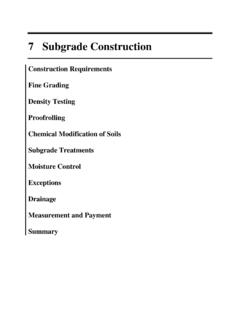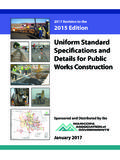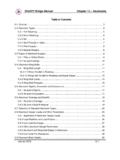Transcription of Timber Harvesting - US Forest Service
1 Timber Benefits of Outcomes To Maintain Soil and Visual Impacts of Apparent Harvest Sensitive and Skid Quality and and Perpetuating (standing dead trees)..33 Leave Trees (live trees)..33 Post-Operational Harvesting 12 Timber HarvestingFIGURESFig. TH-1:Travel Speed and Apparent Field of TH-2:Progressive Timber Harvest TH-3:Fingers and Fire TH-4:Using Narrow Openings and Vegetative Islands To ReduceVisual Impact of Harvest TH-5:Using Natural Terrain To Screen Harvest AreaFrom TH-6:Shaping Clearcuts To Resemble Natural TH-7:Using Multiple-Stage Cutting To Reduce ApparentHarvest Area TH-8:Sample 20-Acre Timber Sale: An Example ofInfrastructure TH-9:Using Dogleg Access Roads To Hide Landingsand Slash Piles From TH-10:Peat Wetland Surface in Relation to Water TH-1:Suggested Number of Leave Trees for Clearcut HarvestsUsing Scattered, Individual Leave.
2 Guidelines help with how to manage,not whether to guidelines focus on how to protect the functions andvalues of Forest resources during Forest management do not provide advice on whether to manage or whichmanagement activities are provide a menu, not a resource management decisions are based on manydifferent factors, including resource needs, landowner objec-tives, site capabilities, existing regulations, economics and thebest information available at any given time. No one will applyall of the guidelines related to a particular activity. Instead,the landowner, resource manager or logger will consider manydifferent factors in determining which combination of guide-lines provides the best fit for a particular site at a particulartime. The intent of having multiple guidelines is to providedecision-makers with as much flexibility and as muchchoice as possible in taking steps to effectively balanceforest management needs and resource guidelines and activity-specific guidelinesare closely references from activity-specific guidelines backto the general guidelines will make it easy for landowners,resource managers, loggers and others to consider all of therelated guidelines both general and specific that applyto a particular management are supplemented from time to timeby Additional Considerations.
3 The guidelines are supplemented from time to time by Additional Considerations, which provide additional guid-ance to further promote the sustainability of Forest Harvesting 3 INTRODUCTIONT imber Harvesting involves planning harvest and reforestation;cutting trees and moving them to a landing; processing, sortingand loading; and transporting Benefits of GuidelinesBenefits to cultural resources: Timber Harvesting guidelines canminimize the potential effects of Harvesting activities, such asmixing of surface soils, rutting, compaction and erosion, whichcan damage certain kinds of cultural resources. Guidelines forconstruction of roads and landings, felling, skidding and slashmanagement can help to protect cultural to Forest soils: Timber Harvesting guidelines are designedto help protect the physical, chemical and biological propertiesof Forest soils by minimizing the effects of soil compaction andrutting, erosion and nutrient removal that can result from timberharvesting activities.
4 Reducing these potential impacts canmaintain root penetration, availability of water, water absorptionby plants, availability of oxygen and other gases in the soil, andthe degree to which water moves laterally and vertically throughthe soil. Guidelines can also minimize the need for expensiverehabilitation of highly impacted to riparian areas: Timber Harvesting guidelines canminimize the alteration of vegetation within the riparian vegetation is important for providing inputs of coarsewoody debris and fine litter to water bodies; retaining nutrients,sediment and energy; bank and shoreline stabilization; mainte-nance of moderate water temperatures through shading; andwildlife habitat. Guidelines for retaining vegetation can also havea positive impact on aesthetics, wood products and to visual quality: Timber Harvesting guidelines can moderatethe potential adverse visual quality impacts from Timber harvest-ing activities and help reduce the impression of poor harvestingand utilization.
5 Guidelines related to perceived harvest size,slash, landings and snags have the greatest potential to enhancevisual Harvesting 5 Benefits to water quality and wetlands: Timber Harvesting guide-lines provide protection to water quality and wetlands by mini-mizing potential nonpoint source pollution resulting from soildisturbance, disruption of vegetative cover, and Timber harvest-ing activities in close proximity to streams, lakes and to help maintain vegetative cover can also helpriparian areas moderate water temperatures. Guidelines thataddress equipment operations and maintenance can help protectwater quality, and guidelines to minimize rutting in wetlandshelp maintain normal water to wildlife habitat: Timber Harvesting guidelines reducethe potential for Timber Harvesting activities to disturb sensitivesites, rare species, water features and unique habitats. Guidelinesrelated to Timber Harvesting , especially clearcutting, are aimedat maintaining structural components on a site (including livetrees, snags, woody debris, shrubs and ground cover) that areneeded by Forest wildlife now and as the stand soil and water resourcesr Appropriate reforestation goals should be considered beforebeginning harvest activity.
6 The plan should include site preparationtechniques, if needed, and species selection prior to may include natural regeneration of existing Special soil conditions and topographic features make someareas of the state more sensitive than others to soil primary examples of these localized sensitive areas arethe blufflands of southeast Minnesota and the Nemadji RiverBasin south of When working in areas with special soil conditions and topo-graphic features that make them more sensitive to disturbancethan others, the landowner, resource manager or operator needsto increase the intensity of planning compared to other forestedregions of the state. Planning should address long-term develop-ment and maintenance Timber Harvestingr Soil impacts can be minimized by limiting the soil area impactedby infrastructure (roads, landings and primary skid trails), andby careful consideration of timing, equipment being used, andharvesting methods.
7 Planning considerations include carefullydetermining appropriate operating seasons for any given soil,as well as using harvest layouts, strategies and equipment thatminimize the surface area of a site that is Appropriate Timber Harvesting strategies and practices can beemployed to ensure that Timber Harvesting practices do notreduce the productive capacity of Forest soils through removalof nutrients or disruptions of nutrient cycles. On most Minnesotaforest soils, nutrient removal through harvest is not a , guidelines should be applied in specific situations andsite conditions, with the goal of balancing the level of nutrientsremoved through Timber harvest with natural nutrient Susceptibility to compaction and rutting on wetlands is dependenton several factors, including level of equipment trafficking,type of equipment used, soil type (mineral soil or peatland),soil water content at the time the silvicultural activity is conducted,and season of activity.
8 In general for mineral soil wetlands, compaction and rutting increase as soil texture becomes finerand soil water content increases. In unfrozen peatland, deeprutting can bring muck to the surface and block normal water Wetlands are highly productive sites for a variety of ecologicfunctions, as well as for the enhancement of water Forest management operations in or adjacent to wetlandsshould be planned and conducted in a manner that protectsthese Using appropriate Forest management guidelines for harvestingactivities will minimize the potential for sediment, chemical,nutrient and debris movement into streams, lakes, wetlands,seasonal ponds and ground water. Guidelines will also minimizethermal (heating) impacts on surface Employing loggers who have been trained in guideline implementationcan aid in proper and efficient application of site-level timberharvesting Harvesting 7 Visual impactsr Travel speed affects the apparent field of vision and the observationtime, which impact the users levels of concern.
9 See Figure Type of harvest (clearcut vs. partial cut, for example) affects userperception of apparent Stand condition and health should be considered along with Desired future condition of a particular stand should be consideredalong with visual Proximity to recreational use areas results in enhanced user concernsregarding apparent size of TH-1: Travel speedaffects apparent field of visionand observation Timber HarvestingManaging slashr Slash is unavoidable when Timber Slash treatment has a definite Slash near streams, lakes and wetlands is subject to Slash provides soil Size and number of landings are affected by species, productsdeveloped, size of sale and Timber sale Topography can limit both placement and number of Proximity of harvest to travel routes or use areas can affectplacement of Proposed future use of landing area (as a parking area alonga recreational trail or as a wildlife opening, for example)
10 Canaffect size and placement of Landing treatment practices may result in additional cost,no change in cost, or a savings in Snags represent a potential safety hazard for logging Snags can limit effective growth of future plantations by occupy-ing space that could otherwise be used by healthy Snags may increase the potential risk of lightning Snags enhance the quality of wildlife habitats, providing nesting,denning, feeding and roosting sites, as well as escape Snags may increase insect and disease problems for regenerationof a new Harvesting 9 Design OutcomesTo Maintain Soil ProductivityTimber Harvesting should be designed and conducted toachieve the following beneficial outcomes regarding soilproductivity: Soil in a condition that favors regeneration andgrowth of native vegetation and trees No more than 1-3% of the Timber harvest areaoccupied by roads and landings (Small or irregularlyshaped units may result in higher percentages.)








